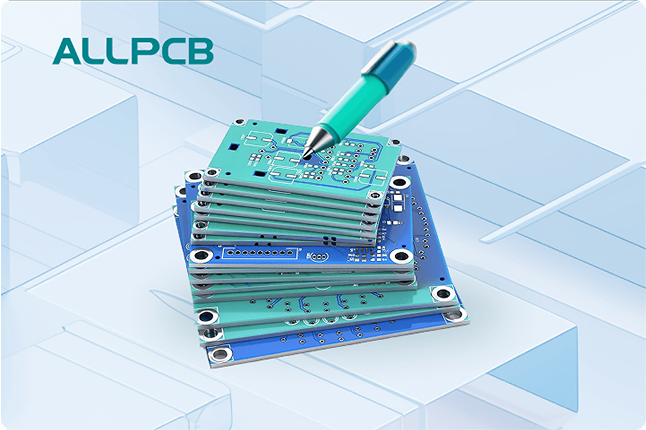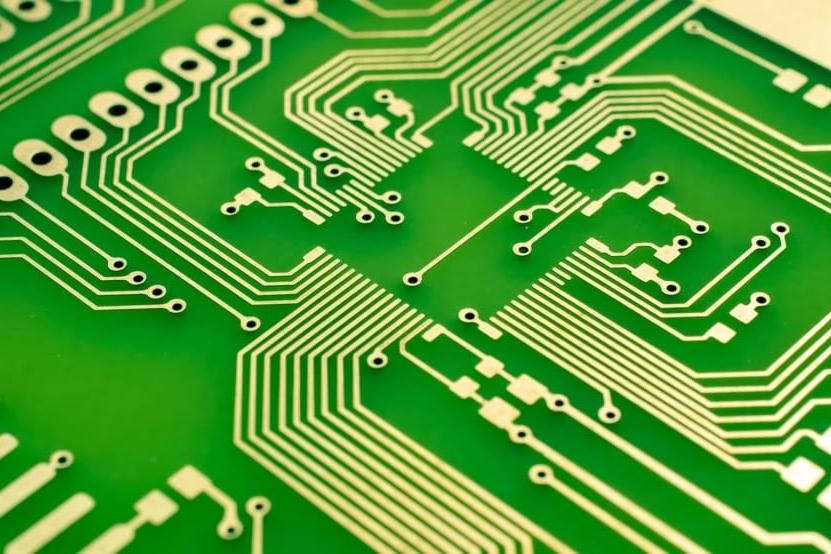If you're facing issues like PCB legend smearing, misalignment, fading, or incomplete printing, you're not alone. These common defects can impact the clarity and functionality of printed circuit boards (PCBs), leading to assembly errors or miscommunication during manufacturing. In this guide, we'll walk you through practical solutions for PCB legend printing troubleshooting, helping you identify the root causes and fix these issues step by step.
Whether you're a PCB designer, manufacturer, or hobbyist, this detailed blog will provide actionable tips to ensure your legend printing—also known as silkscreen text—is clear, accurate, and professional. Let’s dive into the specifics of each defect, explore why they happen, and learn how to prevent them in your next project.
What Is PCB Legend Printing and Why Does It Matter?
PCB legend printing, often referred to as silkscreen printing, involves adding text, symbols, or markings on the surface of a PCB. These markings typically include component identifiers, polarity indicators, test points, and other critical information needed during assembly and testing. The legend is applied over the solder mask layer, usually in white or yellow ink, to ensure visibility.
Clear and accurate legend printing is essential because it guides technicians during assembly, reduces errors, and ensures proper component placement. Defects in legend printing can lead to costly mistakes, such as incorrect component orientation or mislabeled boards, ultimately delaying production or causing failures in the final product. Understanding and troubleshooting issues like PCB legend smearing, misalignment, fading, or incomplete printing can save time and resources.

Common PCB Legend Printing Defects and Their Causes
Before diving into solutions, it’s important to understand the most common defects in PCB legend printing and what typically causes them. Below, we break down four major issues: smearing, misalignment, fading, and incomplete printing.
1. PCB Legend Smearing
Smearing occurs when the legend ink spreads beyond its intended boundaries, making text or symbols blurry and hard to read. This defect often happens during the printing process or due to improper handling afterward.
Common Causes:
- Excessive Ink Application: Too much ink during the silkscreen process can cause it to bleed or smear.
- Low-Quality Ink: Inferior ink may not adhere properly to the solder mask, leading to smudging.
- Improper Curing: If the ink isn’t cured at the right temperature or for the correct duration (typically 150°C for 10-15 minutes), it may remain tacky and prone to smearing.
- Handling Issues: Touching the board before the ink fully dries can transfer residue or distort the legend.
2. PCB Legend Misalignment
Misalignment happens when the legend text or symbols are not positioned correctly on the PCB, often overlapping with pads, vias, or other components. This can make the board look unprofessional and confuse assemblers.
Common Causes:
- Inaccurate Design Files: Errors in the Gerber files or misalignment between the legend layer and other layers can lead to misplaced markings.
- Equipment Calibration Issues: Printing equipment that isn’t properly aligned can shift the legend during application.
- Thermal Expansion: During manufacturing, slight expansion or contraction of the board material (like FR-4, with a thermal expansion coefficient of about 14-17 ppm/°C) can cause misalignment if not accounted for.
3. PCB Legend Fading
Fading refers to legend markings that lose their color or visibility over time, often becoming difficult to read. This defect can occur during manufacturing or after prolonged exposure to environmental factors.
Common Causes:
- Poor Ink Quality: Low-grade ink may not withstand the chemicals used in PCB processing, such as fluxes or cleaning agents.
- Inadequate Curing: Insufficient curing can leave the ink vulnerable to fading during soldering or cleaning processes.
- Environmental Exposure: Prolonged exposure to UV light, heat, or humidity can degrade the ink over time, especially if the PCB is used in harsh conditions.
4. PCB Legend Incomplete Printing
Incomplete printing occurs when parts of the legend are missing or only partially printed, leaving gaps in text or symbols. This defect can render critical information unreadable.
Common Causes:
- Clogged Screens: In silkscreen printing, debris or dried ink in the mesh can prevent ink from transferring fully to the board.
- Insufficient Ink Pressure: If the squeegee pressure is too low during printing, ink may not cover the entire design.
- Surface Contamination: Dust, oil, or residue on the PCB surface can interfere with ink adhesion, leading to incomplete prints.

Step-by-Step PCB Legend Printing Troubleshooting Guide
Now that we’ve identified the common defects and their causes, let’s explore practical solutions for PCB legend printing troubleshooting. Follow these steps to address each issue effectively.
Troubleshooting PCB Legend Smearing
- Check Ink Volume: Ensure the printing equipment is set to apply the correct amount of ink. Adjust the squeegee pressure and speed to avoid over-application.
- Use High-Quality Ink: Opt for industry-standard inks designed for PCB silkscreen printing, ensuring proper adhesion and durability.
- Verify Curing Process: Confirm that the curing oven is set to the recommended temperature and duration (e.g., 150°C for 10-15 minutes) to fully harden the ink.
- Handle with Care: Avoid touching the PCB surface after printing until the ink is fully cured. Use gloves and automated handling systems if possible.
Troubleshooting PCB Legend Misalignment
- Review Design Files: Double-check your Gerber files to ensure the legend layer aligns with other layers like solder mask and copper. Use design software tools to verify layer registration.
- Calibrate Equipment: Regularly maintain and calibrate printing machines to prevent shifts during the silkscreen process. Check alignment with test boards if needed.
- Account for Material Properties: Consider the thermal expansion of your PCB material during design and manufacturing. For FR-4 boards, anticipate a small shift (around 0.014-0.017% per degree Celsius) and adjust layouts accordingly.
Troubleshooting PCB Legend Fading
- Select Durable Ink: Choose inks resistant to chemicals, heat, and UV light. Epoxy-based inks are often a reliable choice for PCB legends.
- Optimize Curing Conditions: Ensure the curing process meets manufacturer specifications to lock in the ink’s color and durability.
- Protect Boards: If the PCB will be exposed to harsh environments, consider adding a protective coating over the legend or storing boards in controlled conditions to minimize fading.
Troubleshooting PCB Legend Incomplete Printing
- Clean Printing Screens: Regularly inspect and clean silkscreen meshes to remove debris or dried ink. Use appropriate solvents and follow a consistent maintenance schedule.
- Adjust Ink Pressure: Test and adjust the squeegee pressure to ensure even ink distribution across the board surface.
- Prepare PCB Surface: Clean the PCB surface before printing to remove contaminants like dust or oil. Use isopropyl alcohol and lint-free wipes for best results.
Preventive Measures for Flawless PCB Legend Printing
While troubleshooting is essential, preventing defects in the first place is even better. Here are some proactive tips to ensure high-quality PCB legend printing in every batch.
- Collaborate on Design: Work closely with your manufacturing team during the design phase to ensure legend placement avoids crowded areas or critical components. Maintain a minimum clearance of 0.2 mm between legend text and pads or vias.
- Use Standard Fonts and Sizes: Stick to legible fonts like Arial or Helvetica with a minimum height of 1.5 mm and a line width of 0.15 mm to ensure readability after printing.
- Conduct Test Runs: Before full production, run a small batch of boards to check for potential issues like smearing or misalignment. Adjust settings as needed based on the test results.
- Maintain Equipment: Schedule regular maintenance for printing and curing equipment to avoid unexpected defects caused by wear and tear.
- Store Materials Properly: Keep PCBs and inks in a controlled environment (e.g., 20-25°C and 40-60% humidity) to prevent degradation before and after printing.
Advanced Tips for PCB Legend Printing Troubleshooting
For those with more experience in PCB manufacturing, consider these advanced strategies to further refine your legend printing process.
- Switch to Digital Printing: If silkscreen printing consistently produces defects, explore digital inkjet printing for legends. This method offers higher precision and eliminates issues like clogged screens, though it may increase costs by 10-20%.
- Monitor Ink Viscosity: Use a viscometer to check ink consistency before printing. Ideal viscosity for PCB silkscreen ink typically ranges from 10,000 to 20,000 centipoise (cP), ensuring smooth application without smearing.
- Implement Automated Inspection: Use automated optical inspection (AOI) systems to detect legend defects immediately after printing. These systems can identify misalignment or incomplete printing with an accuracy of up to 0.01 mm.

Conclusion: Mastering PCB Legend Printing for Better Results
Dealing with PCB legend printing defects like smearing, misalignment, fading, or incomplete printing can be frustrating, but with the right troubleshooting steps, you can achieve clear and reliable results. By understanding the root causes—whether it’s ink quality, equipment calibration, or handling practices—you can address issues effectively and prevent them from recurring.
Start by reviewing your design files, optimizing your printing process, and implementing preventive measures like regular equipment maintenance and proper material storage. For advanced users, exploring digital printing or automated inspection can take your PCB legend quality to the next level. With these strategies, you’ll ensure your boards are not only functional but also professional and error-free.
At ALLPCB, we’re committed to helping you succeed in every aspect of PCB manufacturing. Whether you’re tackling PCB legend smearing, misalignment, fading, or incomplete printing, use this guide as your go-to resource for PCB legend printing troubleshooting. Let’s build better boards together!
 ALLPCB
ALLPCB







